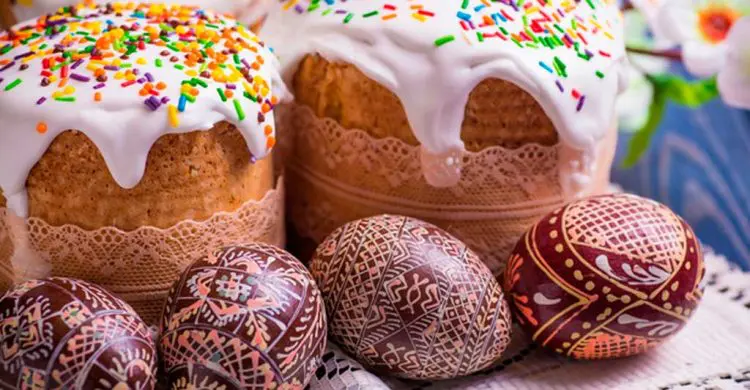
Easter (russ.: Пaсха [Paskha]) is the major religious celebration of the year in Russia. Kids and adults, city dwellers and country folk go to church to attend the Easter Mass. Easter in Russia is a lot more than a celebration of the resurrection of Jesus Christ. This is a long and powerful tradition that could not be eliminated even by the communists. It brings peace, joy and hope to the people who are truly believe. And, of course, the Russians are looking forward to a happy family feast with lots of special Easter food like Easter bread, traditional cheese cake Paskha, Easter eggs and other tasty treats.
In Russia Easter is usually celebrated later than in the West. This happens because Easter dates are determined by different calendars. The Russian-Orthodox church uses the old Julian calendar, whereas the Roman Catholic and Protestant churches switched to the Gregorian calendar in the 16th century. This year (2018) Easter will be celebrated on 8th of April.
Patriarch Kirill of Moscow and All Russia holds the Main Easter Service at the Cathedral of Christ the Savior in the centre of Moscow.
At midnight ringing church bells announce the resurrection of Jesus Christ. Priests come to the altar holding a crucifix and candles. Solemnly singing, they walk through the church and then around it. Everyone lights the candles and follow the procession. Churches and cathedrals are now full of singing voices and candle lights.
As there are no bench rows in orthodox churches, some people find it difficult to stand the whole mass that goes on for hours. But the impressive ceremony is worth every effort. The Easter service ends early in the morning when the priests go around the crucifix. Numerous church bells start ringing, the singing gets louder, and finally the priests tell everybody to forgive each other and seal it with a hug and a kiss. Everyone happily follows this appeal. The traditional Easter greeting can be heard everywhere: “Christ is risen!” (russ.: Христос воскресе!) and the answer “He is truly risen!” (russ.: Воистину воскресе!).
The holy week is pretty much busy in most Russian homes. Once a spring cleaning is done, it’s time for baking Easter bread. The eggs are painted on Holy (“Clean”) Thursday and fresh Easter cakes (Paskha) are prepared on Saturday. It’s a tough time as Saturday is the last fasting day when orthodox Christians are allowed to eat very little. It is also forbidden to taste food while cooking. It is a tradition to bless Easter eggs and bread in the church. Fasting ends after the Easter Mass and feasting begins.
The Easter Day starts with a long family breakfast. The table is decorated with fresh flowers, willow branches and, of course, painted eggs. Besides Easter bread and Paskha that are only eaten on Easter, there is lots of other food on the table like sausages, bacon, cheese, milk, etc. – so basically everything that was prohibited during the Forty Day Fast. However, the feast starts with a piece of aromatic Easter bread.
Sharing food on Easter has been a long tradition in Russia. That is why after breakfast people visit their friends and neighbours exchanging eggs and small Easter breads. If the first egg you get on Easter is a truly gift given from the heart, it will never go bad, says an old Russian proverb.
Painted eggs are an international Easter symbol. In Russia Easter eggs are believed to possess magic powers. They are supposed to protect crops against hail damage, keep cattle healthy and ward off evil spirits. An Easter egg hidden in the foundation of a house would bring the owners happiness and prosperity. So it’s no wonder that painted and blessed Easter eggs used to be kept as lucky charms for a long time. One day someone started making and painting wooden eggs. Porcelain, golden, silver and gemstone eggs are very precious. The most exquisite ones are probably the Imperial Easter Eggs designed by the world-famous jeweller Peter Carl Fabergés for the Russian Royal Family.
Traditional Easter eggs are red. Of course, it is also possible to use other colours. In Russia eggs are often cooked together with onion skins or wrapped in colourful fabric remnants. Spinach dyes eggs green and beet root gives them a red tint. Easter eggs get a nice shine if rubbed with vegetable oil.
To learn more about various Russian traditions and customs ProBa Language School invites you to participate in the Russian Summer School. You will be fascinated by the beautiful scenery of the majestic Saint-Petersburg. Don’t miss the opportunity to visit us as soon as possible!